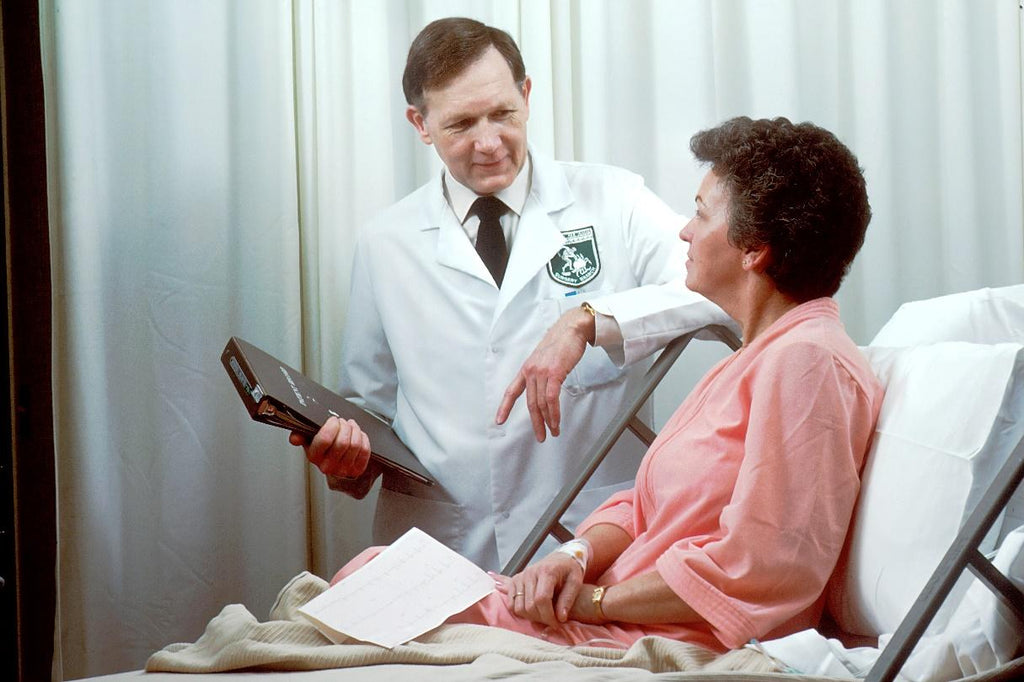If you're someone with little to no background in medicine or life sciences, rectal cancer and hemorrhoids might confuse you. Although most people are aware of hemorrhoids, they can still get misdiagnosed. The reason is that there are multiple anorectal diseases with similar symptoms. This is also the case with rectal cancer.
In terms of pain, the symptoms of rectal cancer are similar to the symptoms of hemorrhoids. So, it's sometimes difficult to distinguish the difference between rectal cancer and hemorrhoids. That's why patients are always advised to consult a doctor whenever symptoms of anorectal diseases develop. They can indicate multiple diseases that can include rectal cancer, hemorrhoids, fistulas, and fissures.
We will give you an overview of hemorrhoids as well as cancer to help you understand the difference between these anorectal diseases.
Rectal Cancer
As the name suggests, rectal cancer is a cancer of the rectum. Like many cancers of the colon and rectal region, it is commonly referred to as colorectal cancer. This is because the underlying features of these cancers are very similar.
It develops due to the accumulation of mutations in precancerous cells of polyps. Polyps are abnormal tissue growths of cells. Certain types like adenomas and sessile serrated polyps can usually cause anorectal cancer. When these malignant cells divide, they can turn into a tumor that penetrates the wall of the rectum. According to eMedicineHealth, the actual cause of rectal cancer is unknown.
However, there are certain risk factors linked to rectal cancer. Having a family history of polyps and colorectal cancer tops the list. Some common risk factors also include the following:
- Tobacco use and smoking
- Inflammatory bowel diseases like Crohn’s disease
- Alcoholism and cirrhosis of the liver
- Obesity and high-fat diet
- Old age
Rectal cancer is dangerous because it can remain undetected and proliferate in the body. It can also take several years for the symptoms to develop. Even when they do, they can be confused with the symptoms of hemorrhoids or other anorectal diseases. Let’s look at the symptoms of rectal cancer.
Symptoms
One of the most common symptoms of rectal cancer is bleeding. The blood can give stool a darker shade. Prolonged rectal bleeding can produce unexplained anemic side-effects, including shortness of breath and fatigue, which do not go away even after the patient rests well. It is common in hemorrhoids, too. Therefore, it is essential to consult your doctor to rule out cancer.
A sudden or drastic change in bowel movement is a prominent symptom. Since cancers tend to grow rapidly once a tumor has formed, a mass of cells or lump inside the rectum can obstruct the passage of stool. It can cause constipation, pain, and the narrowing of stool. An unexplained feeling of passing a bowel movement that does not go away even after passing stool is a major indicator of rectal cancer.
Cramps, abdominal or pelvic pain, diarrhea, and vomiting are also symptoms of rectal cancer. Unexplained weight loss without any lifestyle change is also linked to rectal or colon cancer.
The presence of polyps is another prominent symptom. A doctor can screen for polyps during a standard endoscopy or colonoscopy procedure.
Hemorrhoids
Hemorrhoids, or Piles, are another type of anorectal disease. They are one of the most common types of benign anorectal disease, as explained by the National Center for Biotechnology Information.
Understanding what benign means can explain the difference between rectal cancer and hemorrhoids. In terms of cancer, benign means a localized tissue growth that does not invade nearby tissue or spread to other body parts. Benign also refers to conditions that are not cancerous, dangerous, or serious enough to prove fatal.
Therefore, there's a stark difference between hemorrhoids and rectal cancer. Hemorrhoids are not a life-threatening condition, unlike cancer. They can also be diagnosed on time since they tend to cause much pain and discomfort. A routine anorectal exam can help get you an accurate diagnosis, and hemorrhoids can almost always go away without treatment.
Hemorrhoids are caused due to inflammation of veins of the anus. The primary cause is the pressure exerted on the walls of the anus that can cause the veins to swell up. Known causes include strained bowel movements, chronic constipation, diarrhea, anal intercourse, and pregnancy. They are classified into internal, external, and thrombosed hemorrhoids.
Symptoms
Symptoms of hemorrhoids can vary depending on the progression of the condition and its location. Internal hemorrhoids are the least painful and do not require treatment based on their presence alone. Rectal bleeding is a symptom of hemorrhoids. Itching or irritation in or around the anus is also a common occurrence. If left unchecked, they can lead to severe symptoms. These include severe pain and prolapse. In extreme cases, the prolapsed hemorrhoids cannot be pushed back in and thus require surgery.
External and thrombosed hemorrhoids cause a lot of pain and discomfort. Bleeding during bowel movements is a common symptom. Swollen lumps can also be observed around the anal region. Boil-like skin tags can sometimes develop due to hemorrhoids which can cause a lot of pain when trying to pass stool.
Thrombosed hemorrhoids have blood clots which can make them look like reddish or bluish lumps. As the blood vessels are blocked, swelling can also increase. Sitting also becomes painful and difficult.
Rectal bleeding and pain during or after bowel movements are strong indicators of hemorrhoids. But, we hope you now know that they can be signs of other anorectal diseases as well. We hope this article helped you understand the difference between rectal cancer and hemorrhoids.

